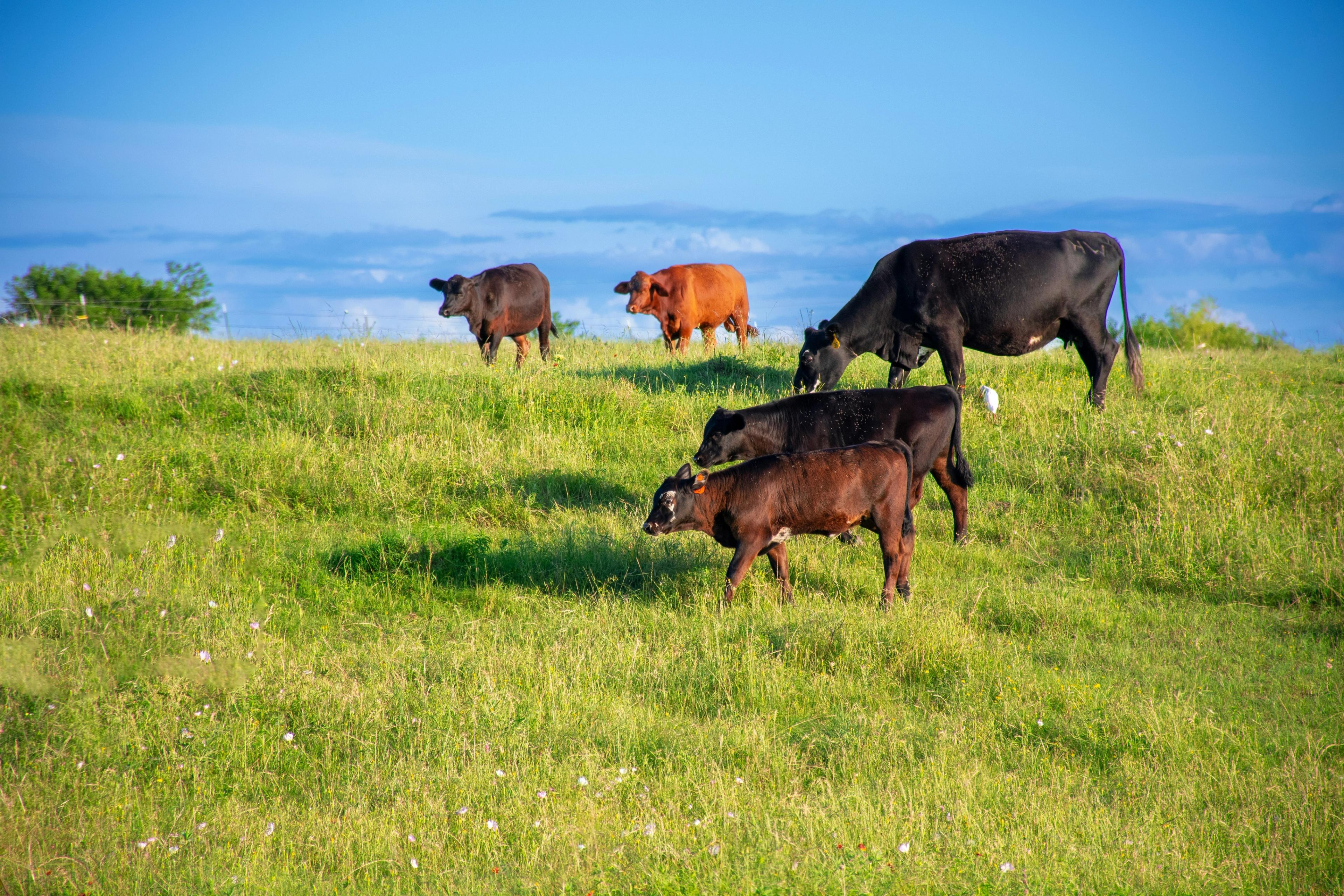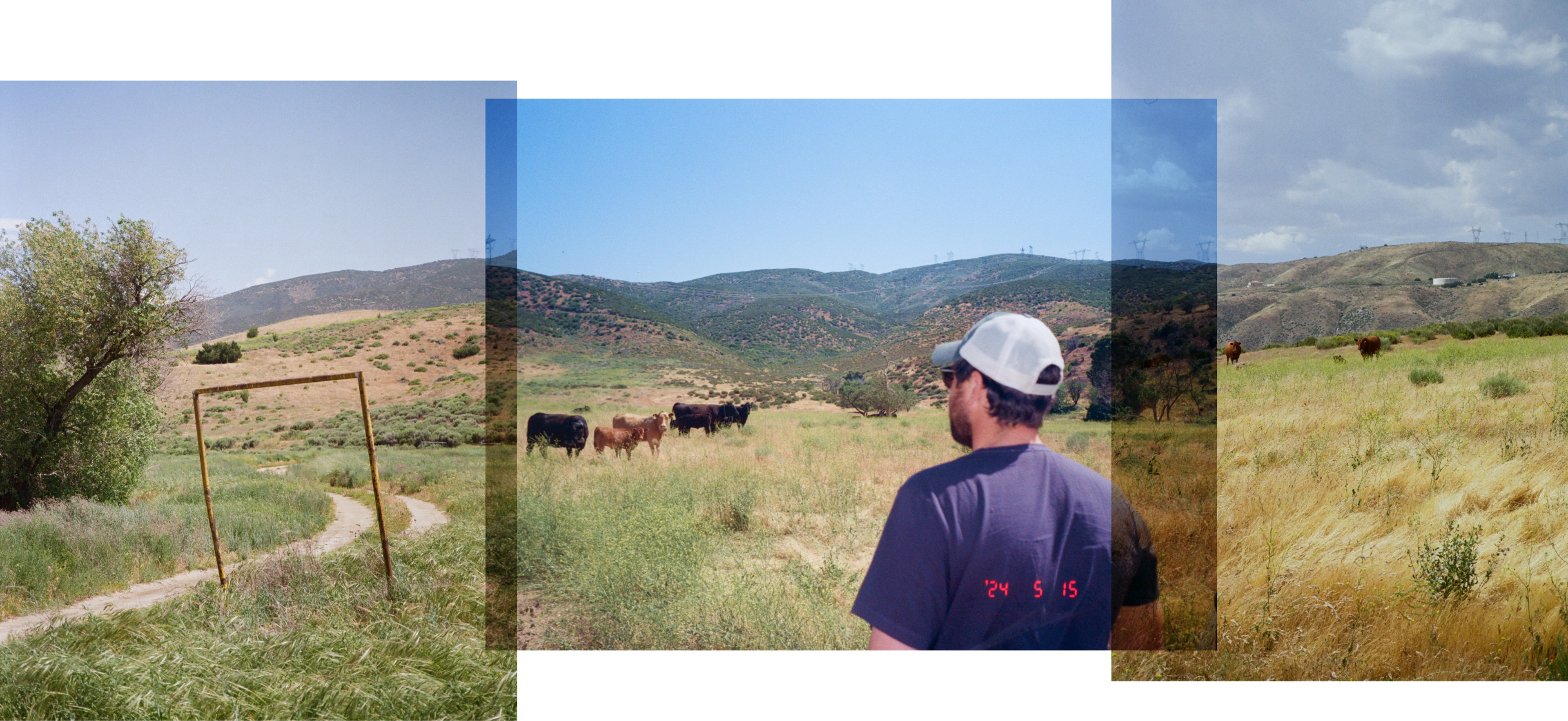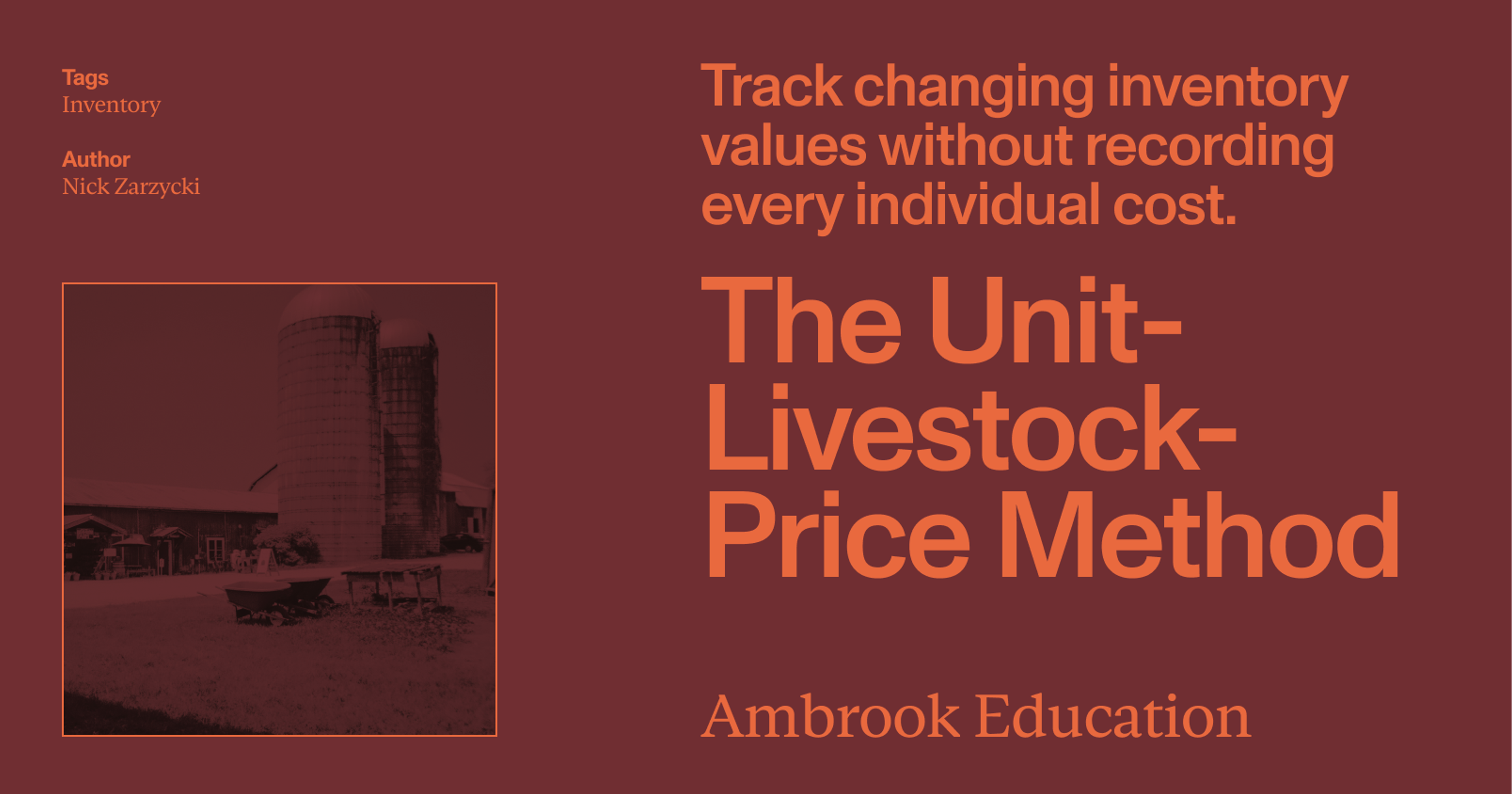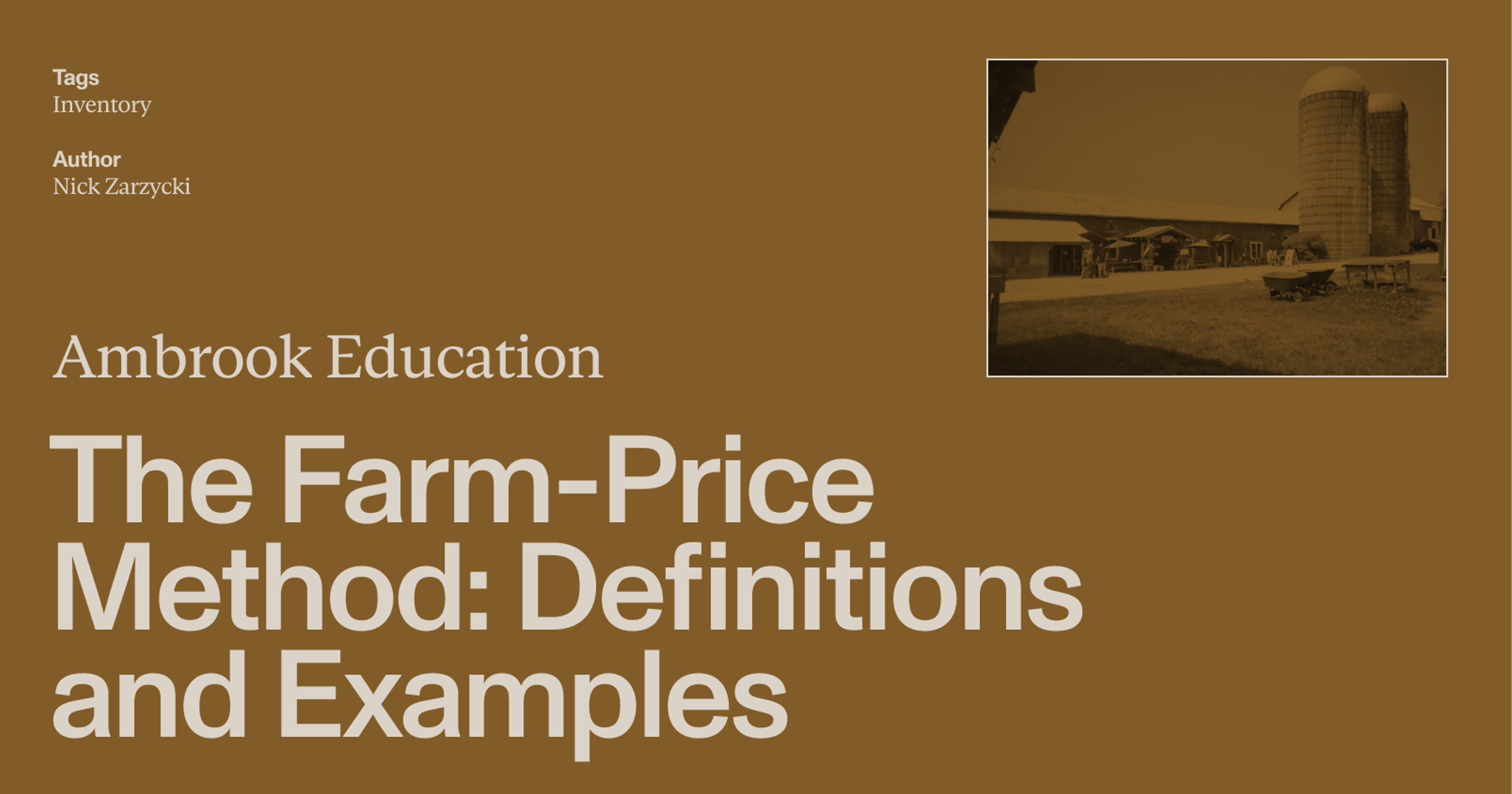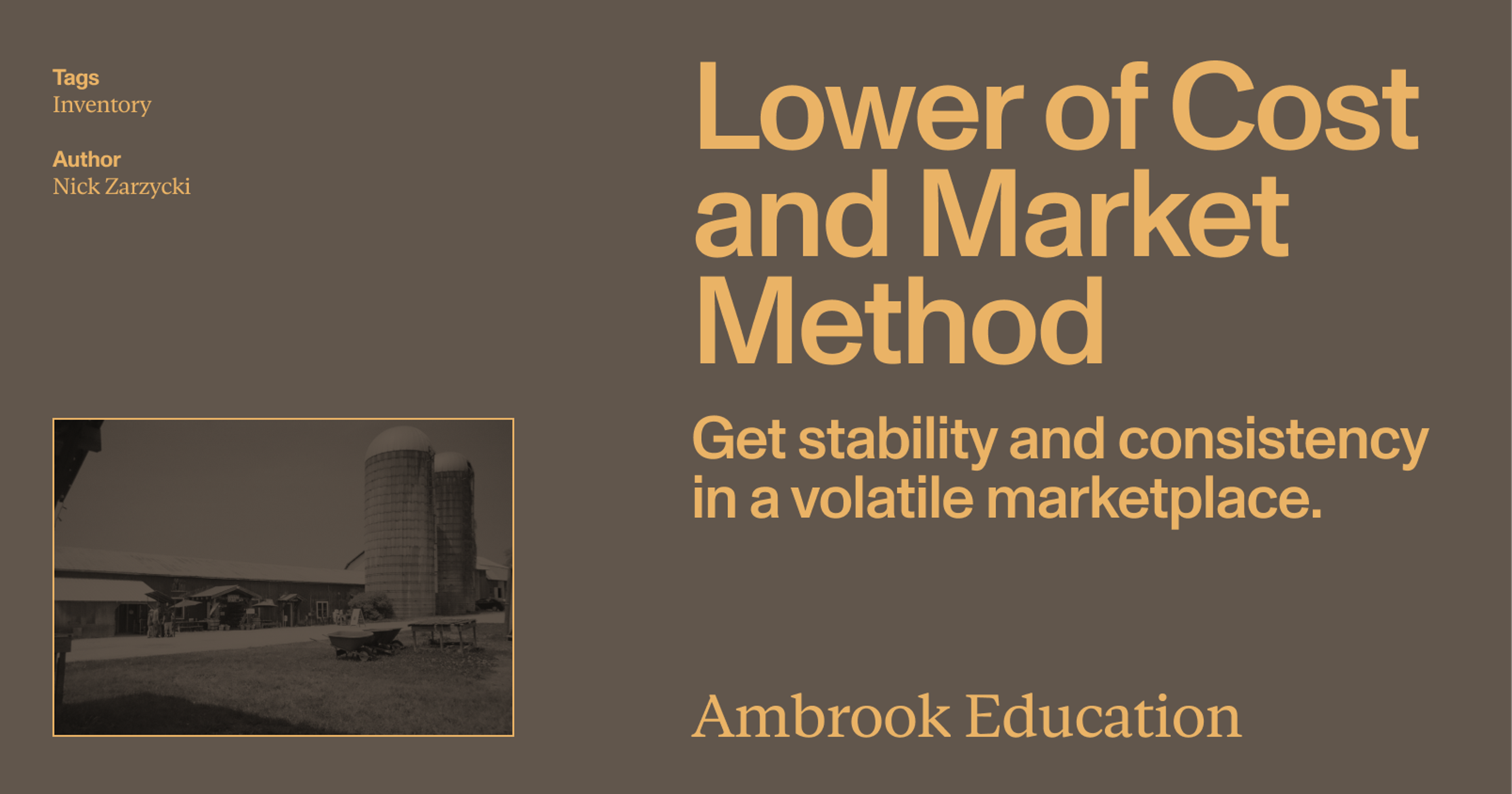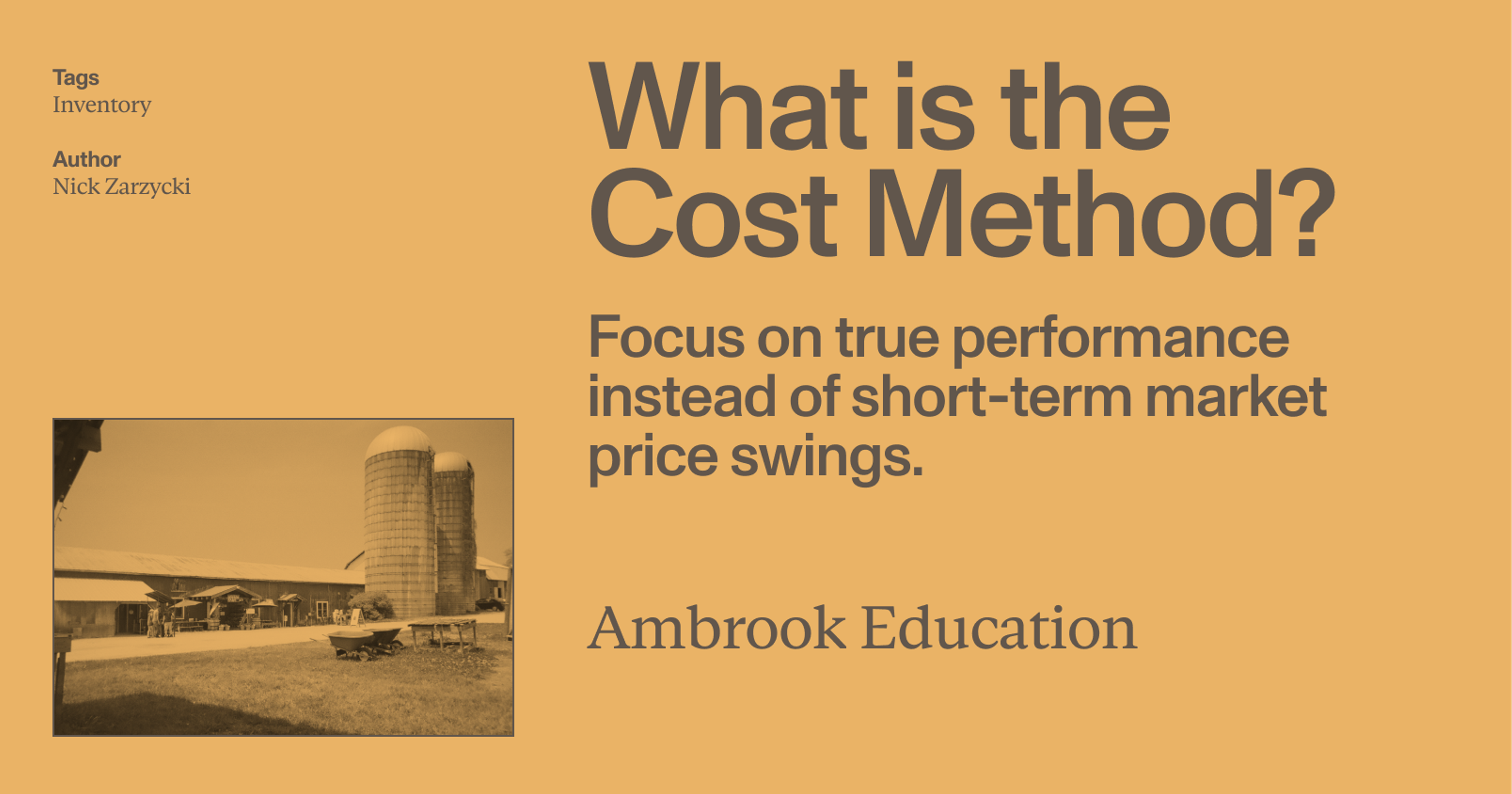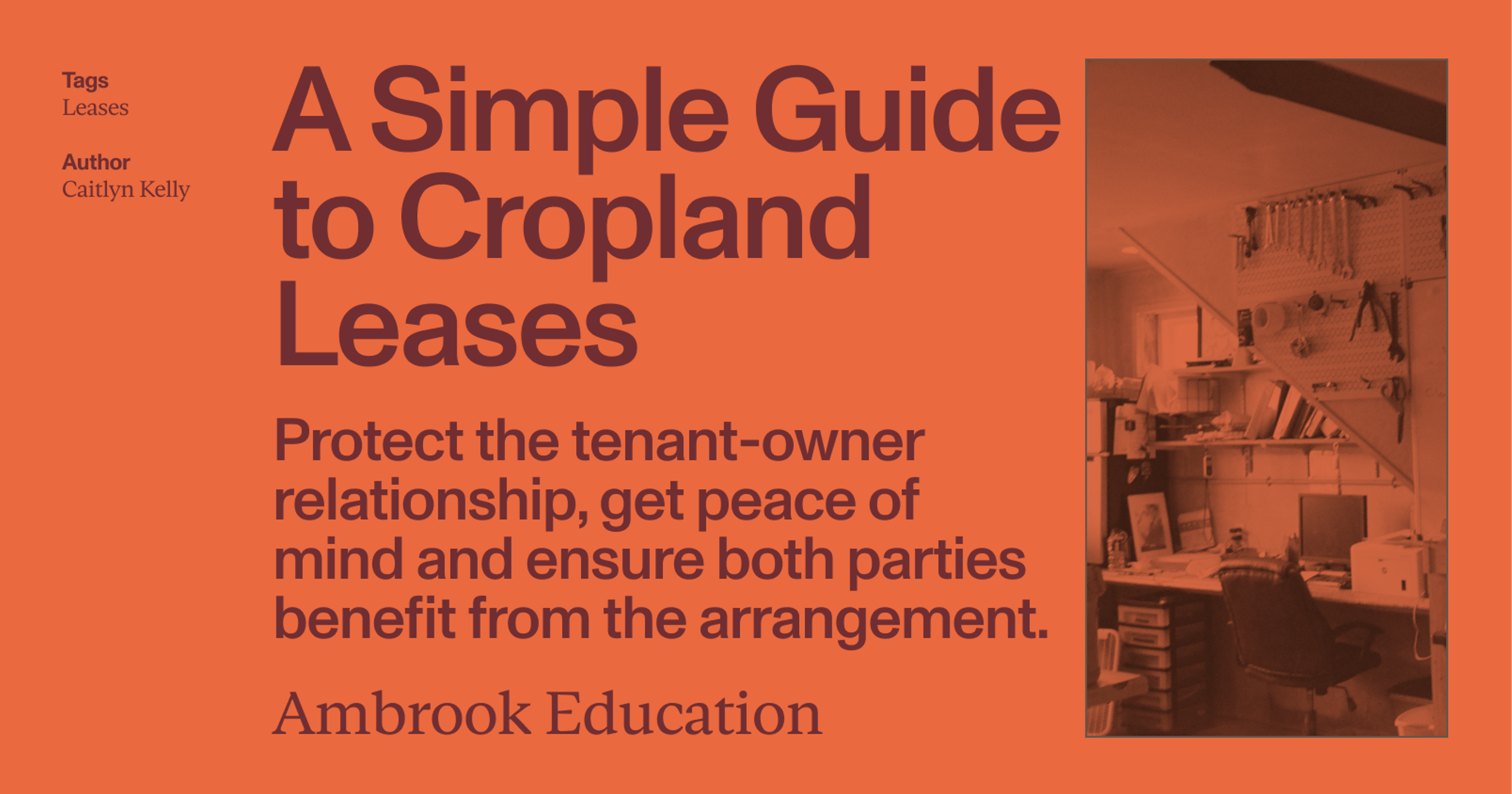Understanding your cost of production is crucial for benchmarking your performance, evaluating future purchases and making better marketing and management decisions.
Calculating your true cost of production is one of the single most important things you can do as an agricultural producer, helping you make better marketing decisions, evaluate big purchases and investments, assess new production practices and benchmark your performance against other producers.
Cost of production is often calculated on a per-unit basis: e.g. per hundredweight, per bushel or per ton. For cow-calf operations, it can be helpful to calculate cost of production per pound of weaned calf. (Accountants refer to this as the ‘unit cost of production’ of the operation.)
Expressed as a formula:
Unit cost of production =
Total expenses in $ / Total lbs. of weaned calf produced
Calculating this ratio can get complicated depending on the state of your recordkeeping and how closely you keep track of expenses. It can also be challenging without the help of a managerial or enterprise accounting system like Ambrook, because the cattle operation often shares fixed costs with other enterprises in the business like custom work, grazing, hay, recreation, etc.
Here we’ll review all of the inputs you’ll need to calculate your ranch’s unit cost of production using Ambrook, spreadsheets, pen and paper or your own accounting system.
Why is calculating cost of production important?
Knowing your cost of production helps you understand how efficient your operation is at turning inputs into outputs. Calculating it lets you:
Track what’s currently happening in the cow-calf enterprise
Benchmark your costs against other producers
Understand profitability
Project into the future and make informed marketing and management decisions
If you find that it costs a certain number of dollars to produce a pound of weaned calf, you’ll need to sell it for that amount or more per pound to turn a profit. Conversely, if you don’t know your unit cost of production, it’s much more difficult to make decisions based on market prices, since you have nothing to compare them to.
Deciding how much you’re willing to spend on a new purchase–on feed supplements, a new vehicle or a new bull, for example–also becomes a lot easier once you know how it will affect your operation in terms of pounds per calf produced.
As University of Nebraska Extension educator Aaron Berger points out, “for each dollar spent on an input, what is a person getting in return? If a dollar spent makes two back, it is a good idea to do more of that. If the dollar spent isn’t returning a value greater than a dollar, then that input needs to be evaluated.”
Step 1: Determine pounds of weaned calf produced
The first step to calculating unit cost of production is likely the most straightforward: measure the total weight of all the calves weaned during the weaning period, including purchased grafted calves but not including nursing calves removed before weaning as a cow-calf pair. This weight should be determined at the time of weaning, while producers who calve continuously should use total weaning weight of calves for the fiscal year.
Step 2: Determine total fixed and variable costs
Figuring your total expenses can take a bit more work, especially if you don’t have a dedicated managerial or enterprise accounting system like Ambrook.
The more exhaustive you are at this step, the more accurate your resulting unit cost of production figure will be. For most operations, expenses tend to fall within one of two categories: overhead and direct costs.
Fixed or ‘overhead’ costs
These are costs that don’t change as you increase the number of cows, like equipment, insurance premiums and labor costs. Significant fixed costs for cow-calf operations that you’ll want to capture include:
Buildings, equipment and maintenance costs
These can be significant for a traditional cow-calf enterprise, and should include all of the depreciation, insurance, taxes and other expenses involved in maintaining the operation’s equipment, vehicles and buildings.
Land rent
Producers who own their land sometimes forget to include land rent in the cost of production. This is a mistake, since they could earn income by renting the land to a neighbor. We recommend including the income foregone by farming the land and not renting it, or the ‘opportunity cost’ of the land, since it provides a more accurate representation of the cost of production.
Labor
Many cow-calf enterprises benefit from hours of unpaid labor from owner-operators, and you’ll need to account for that labor to determine an accurate unit cost of production. If you’re unsure how to, estimate what it would cost to hire a replacement.
Taxes and insurance
This includes property taxes, state and federal taxes, as well as premiums paid for general farm liability insurance, livestock liability coverage, employer’s liability and other insurance.
Legal and professional fees
Include any fees paid towards estate or succession planning services, setting up the business, drafting land or lease agreements, dispute resolution, tax preparation and bookkeeping, or any other professional fees not directly attributable to the cattle operation.
Vehicle registrations
This includes farm plates, off-road vehicle permits for ATVs/UTVs and any other fees paid to the state to legally operate trucks, trailers and utility vehicles.
Variable or ‘Direct’ Costs
These are costs that increase with each additional cow that’s added to the operation and include things like feed, tags, vaccines and supplements. Some significant variable costs for a cow-calf operation include:
Feed
Forage and other feed costs usually make up between 40% and 60% of the annual production costs of cow-calf operations, which makes managing them crucial for keeping costs down.
Protein supplements, salt and minerals
These include any supplements fed to fill gaps in a forage-based diet during winter feeding, drought, breeding or calving season.
Cow depreciation and death loss
While less obvious than the depreciation of equipment or buildings, cows and bulls also depreciate in value as they get older. This form of depreciation can be one of the largest costs in the operation, but is often missed due to the fact that the cost of developing replacement heifers isn’t captured by traditional cash basis accounting. The University of Nebraska’s guide to cow depreciation provides a full rundown of how to account for and manage cow depreciation and death loss.
Veterinary and health costs
This includes the cost of vaccines, fertility testing, parasite control, calving supplies and treatments, castration, disease monitoring, vet call fees, and any other expenses related to animal health.
Bulls and breeding expenses
Costs associated with purchasing or leasing a bull, bull maintenance, breeding soundness exams, breeding costs and, if relevant, artificial insemination (AI) costs can be a significant expense for cow-calf operations.
Step 3: Allocate costs to the cow-calf enterprise
If your farm only has one cattle operation without any other enterprises, you can skip this step and plug all of the expenses you added up above into the unit cost of production formula from earlier.
If you’re like most other agricultural businesses, however, you’ll have numerous enterprises (i.e. custom work, grazing, hay) that share the fixed costs you came up with above. To calculate unit cost of production properly, you’ll need a system capable of assigning those costs to each enterprise. This might involve:
Allocating fixed costs like insurance or taxes among enterprises by revenue or acreage.
Allocating variable costs according to actual usage, time or acres worked by each enterprise.
Valuing products or services exchanged between enterprises (like feed or fertilizer) at realistic market prices to reflect true costs and revenues.
Treating service functions (like machinery or irrigation) as separate cost centers and charging enterprises based on their use of those services.
The way Ambrook does this is with enterprise tags, which give operators the ability to tie costs directly to certain enterprises on the farm. Our California cow-calf case study provides a breakdown of how enterprise tagging can help a typical cow-calf operation properly allocate its costs and help operators measure their true cost of production.
Step 4: Calculate and analyse unit cost of production
Once your costs are properly assigned and you have a total cost figure for the cow-calf enterprise, the final step is to divide that figure by the one you came up with in step 1 to determine your unit cost of production per pound of weaned calf.
Once you’ve calculated your unit cost of production, you can:
Compare your unit cost of production to other producers’ unit cost of productions to benchmark your performance
Compare this year’s unit cost of production to last year’s, to track progress towards your goals and identify areas for improvement
Compare market prices to current unit cost of production to make better marketing decisions
Evaluate future purchases and investments in the business by calculating their impact on unit cost of production
As Rick Machen from the King Ranch Institute points out, once you’ve properly attributed costs to the cow-calf enterprise, there are also several variations on traditional unit cost of production that can produce even more insights, including:
Unit cost of production per hundredweight of weaned calf
This is calculated by dividing total expenses by the total hundredweight of calves weaned, providing a figure directly comparable to the payweight price received after deductions like freight, commissions and slide adjustments.
This metric helps evaluate financial returns and can also be expressed per head when calves are retained as stockers or fed cattle, making it useful for both selling purposes and internal enterprise analysis.
Unit cost of production per breeding female
Dividing total annual expenses by the number of breeding females on hand at the start of the fiscal year gets you the unit cost of production per breeding female, which provides a useful measure of operational efficiency.
This metric accounts for both reproductive performance and environmental fit, highlighting how cow size, feed needs and productivity affect overall cost effectiveness.
Unit cost of production per acre grazed by the enterprise
Dividing total expenses by the number of acres grazed by the cow-calf enterprise results in unit cost of production per acre grazed by the enterprise, which allows the operation to assess land use and facilitate better decisions around stocking rates.
How can I decrease my unit cost of production?
If you find that your unit cost of production is increasing or is simply too high, what can you do to improve it? In most cases this involves cutting costs while ensuring that doing so doesn’t undermine the resiliency of the operation or expose it to any risks.
In addition to learning from other producers who have found themselves in a similar position, as University of Nebraska Extension educator Aaron Berger suggests, you’ve got five options to evaluate:
1. Spend less and maintain production
Reducing overheard costs per cow–by selling equipment or reducing expenses–without changing the herd size can lower unit costs.
2. Spend less and increase production
Shifting calving dates to align with cheaper feed and better weather can reduce costs and improve calf survival, leading to more calves weaned and lower unit costs.
3. Spend less and accept slightly less production
Using cows better adapted to the environment may slightly reduce calf weight, but cuts input costs even more, resulting in a net drop in unit cost of production.
4. Maintain costs and increase production
Crossbred cows (e.g., F1 Hereford x Angus) often outperform straight-bred cows without added costs, improving lifetime productivity and lowering unit cost per calf.
5. Spend more and gain even more
Strategic supplements, like protein for spring-calving cows on poor forage, can boost condition, weaning weights, and pregnancy rates enough to offset the added expense and lower unit cost.
Ambrook takes the guesswork out of running your business
Ambrook‘s enterprise tagging tools help you properly allocate costs to the cattle operation and unlock the numbers you need to make better decisions. Coupled with automatically-generated financial statements, Schedule F support and other features custom-built for agricultural producers, Ambrook helps you make better business decisions and get peace of mind. Want to learn more? Schedule a demo today.
Want to learn more about Ambrook?
This resource is provided for general informational purposes only. It does not constitute professional tax, legal, or accounting advice. The information may not apply to your specific situation. Please consult with a qualified tax professional regarding your individual circumstances before making any tax-related decisions.

